Wildfire Alert: Due to devastating wildfires, the town of Jasper and all Pursuit attractions in the national park are currently closed. For more information, please visit the Pursuit Jasper Wildfire information page. For the latest wildfire information in Jasper National Park, visit the park’s Facebook page at Facebook.com/JasperNP.
Jasper National Park is a unique and natural place to spot Canadian wildlife. Spanning 11,228 square kilometres (4,335 square miles), Jasper’s lakes, valleys, mountains and even icefields are home to abundant species of wildlife in their home habitats. On your next trip to Jasper, here are just a few furry creatures to be on the lookout for.
Also known as Wapiti, these animals frequent many areas throughout the national park. It’s likely that you’ll even spot herds in the town of Jasper or on the roadside driving along the Icefields Parkway. While they may seem tame, it’s important to give elk (and all wildlife) plenty of space and appreciate their beauty from afar—particularly during rutting season in the fall.
FUN FACT: The male mating call is called a bugle, which can be distinctly heard during rutting season.
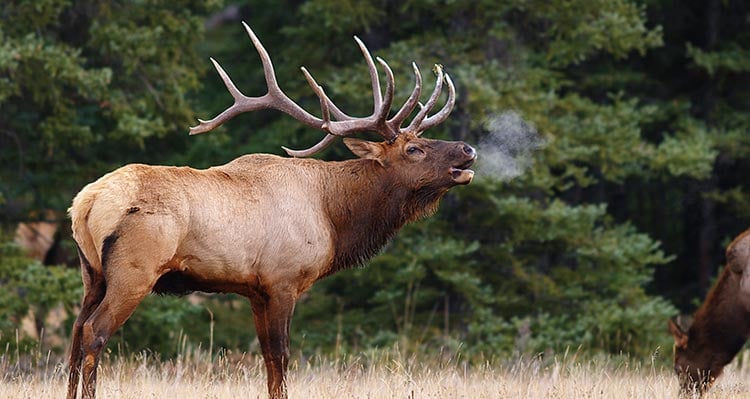
Spotting a moose is always special as they are a shy species. They are also seen less frequently because they are smaller in numbers than elk, with a population of only about 150 in Jasper National Park. In the summer they love hanging out near bodies of water to add aquatic plant life to their foliage diet. Maligne Lake, Medicine Lake and Annette Lake are great locations to spot these gangly-legged creatures.
FUN FACT: Bull (male) moose shed and regrow their antlers each year!
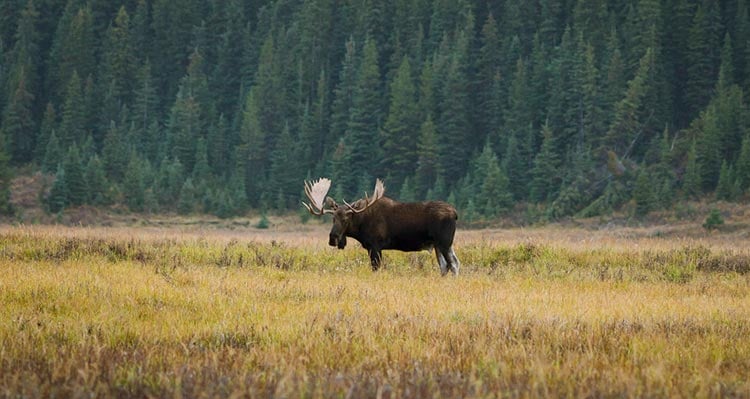
These hearty and versatile creatures can be seen along steep and rocky mountain cliffs in the alpine zone and often also in valley bottoms below. Their shaggy white coats and pointy black horns make them easy to spot in the summer, and they’re often drawn to ‘salt lick’ or mineral-lick areas which contain silt deposits including calcium and sulphate. A particularly good place to look for them is along the Icefields Parkway just north of the Columbia Icefield Skywalk.
FUN FACT: Mountain goats aren’t actually goats! They belong to the antelope family.
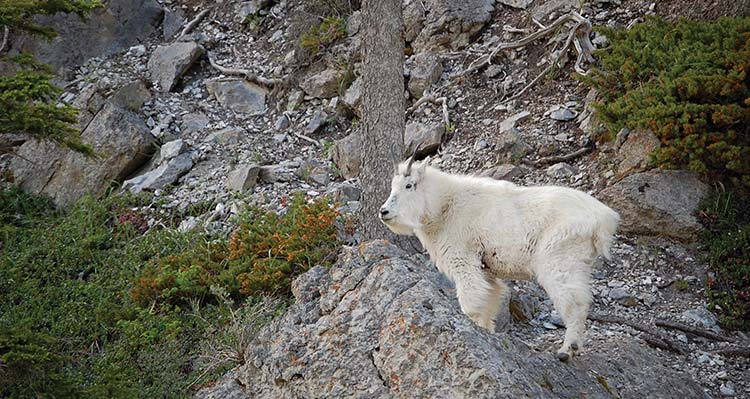
Grizzlies are magnificent creatures to be both admired and respected. Weighing up to 250 kg (550 lb), you’ll want to give these animals plenty of space (100 m/300 feet or 10 bus lengths) and be sure not to crowd them. While they may seem similar to black bears, they are much larger with defining characteristics such as a muscular shoulder hump and a lighter brown colour.
FUN FACT: Grizzlies eat up to 200,000 buffalo berries each day.
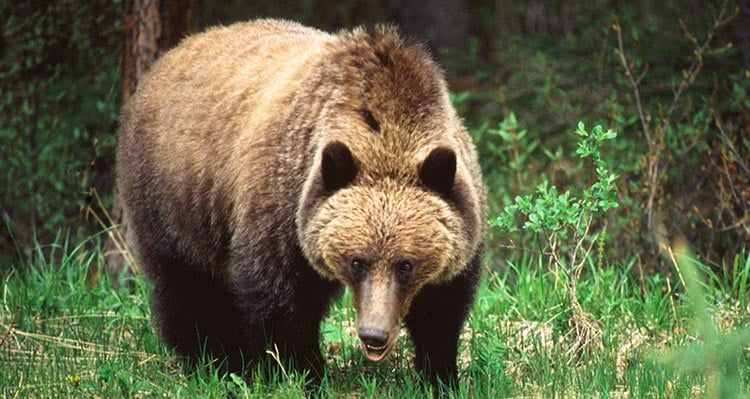
Even if you don't see them, you’ll likely share most trails and outings in Jasper National Park with a hoary marmot or two! These small, silver and brown mammals are often found enjoying the sun on large rocks, and sound a distinct high-pitched whistle when threatened. While they will curiously observe their human trail companions before scurrying away, it is important not to approach them. Watch for them on the craggy peaks in the alpine zone. When you're up too high for trees, chances are there are marmot around.
FUN FACT: Marmots hibernate in winter, just like grizzly bears! For up to eight months these animals are dormant underground.
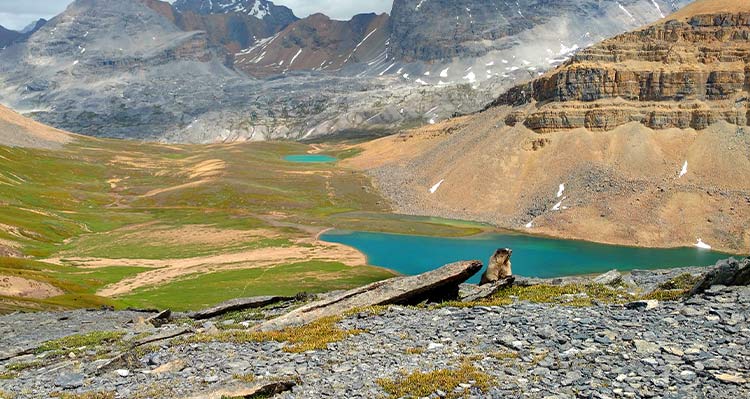
Catch the golden hours for wildlife viewing—most animals are active at dawn and dusk.
Give wildlife space, and resist the urge to pull over on busy roads and highways. The best way to view wildlife is with a long camera lens or a pair of binoculars.
Protect yourself! On any outdoor outing in Jasper National Park, it is essential to carry bear spray and educate yourself on how to handle wildlife encounters. For more tips on sustainably, safely and respectfully watching wildlife in Banff and Jasper see more tips here.
Insider tips, inspiration and deals — delivered straight to your inbox.